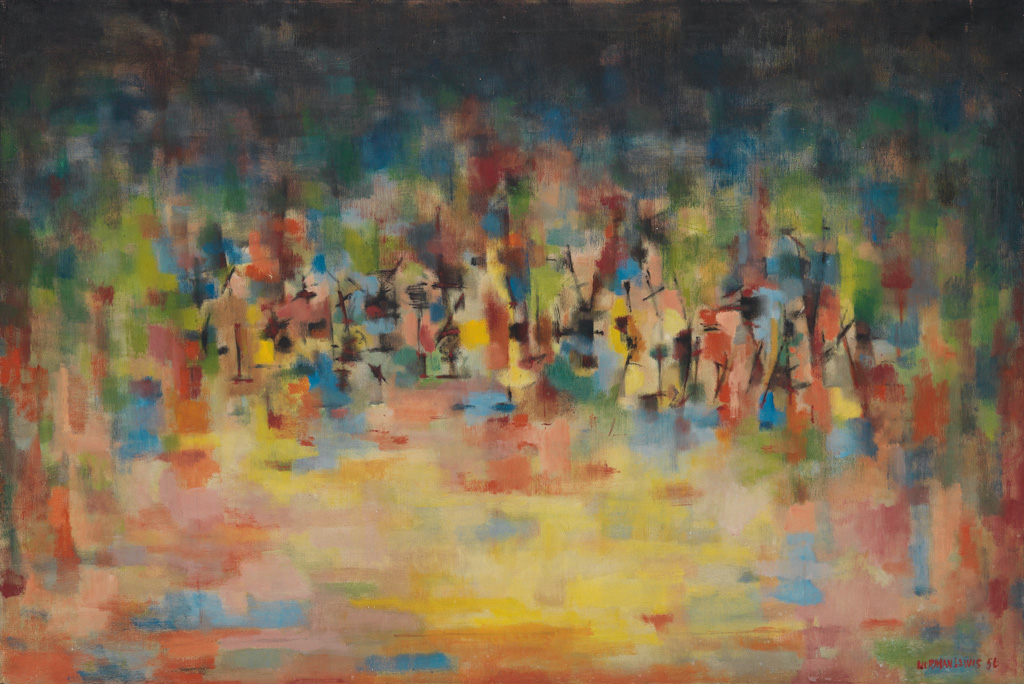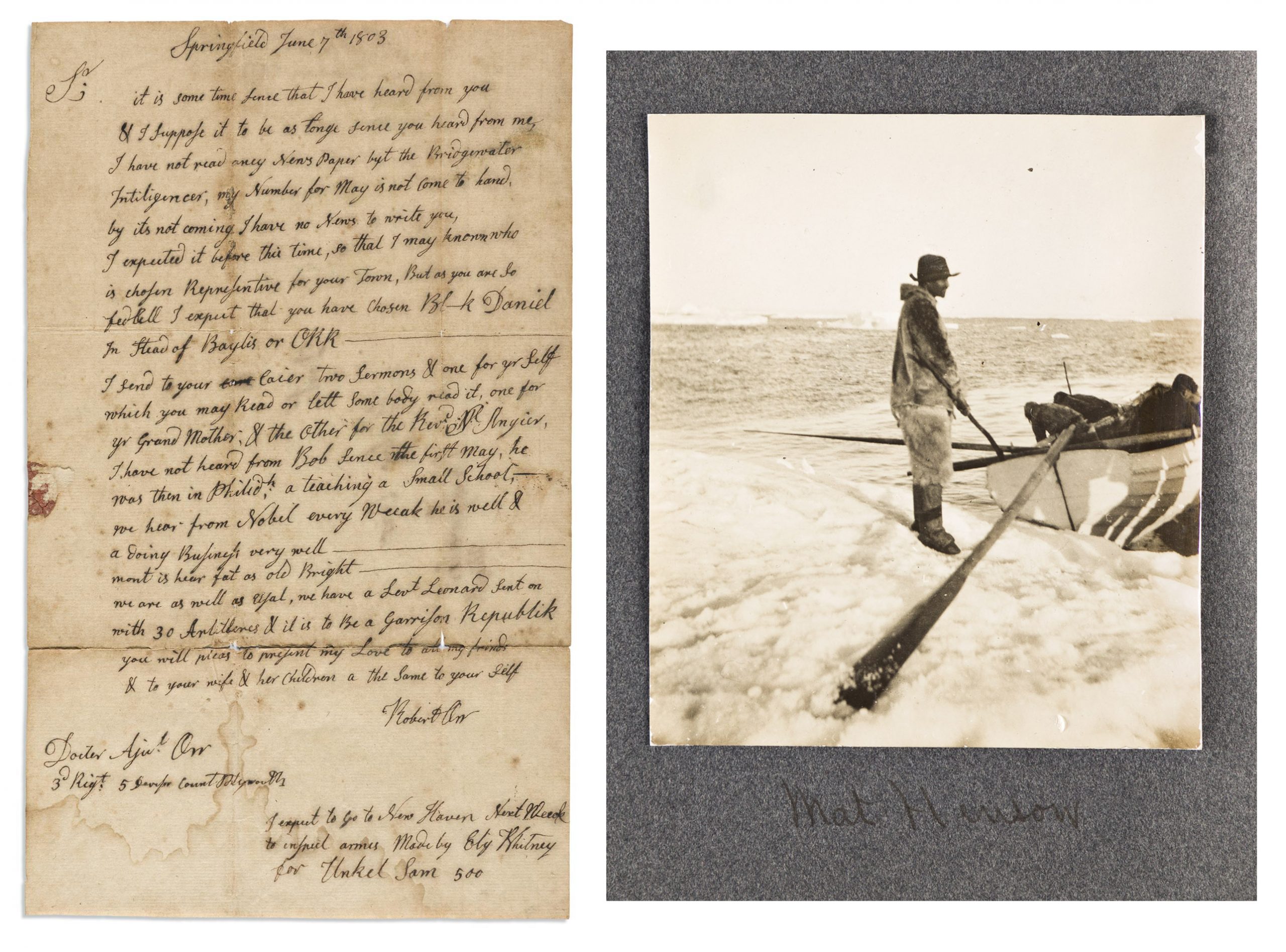Diary of a Syrian-American Woman, 1908
On a trip to her homeland, a young Syrian-American woman named Mary Arbeely kept a diary recording her attempts to connect with her ancestors while feeling deeply homesick. The diary, spanning November 1908 to September 1909, is one of the more personal highlights in our September 28 auction of Printed & Manuscript Americana.
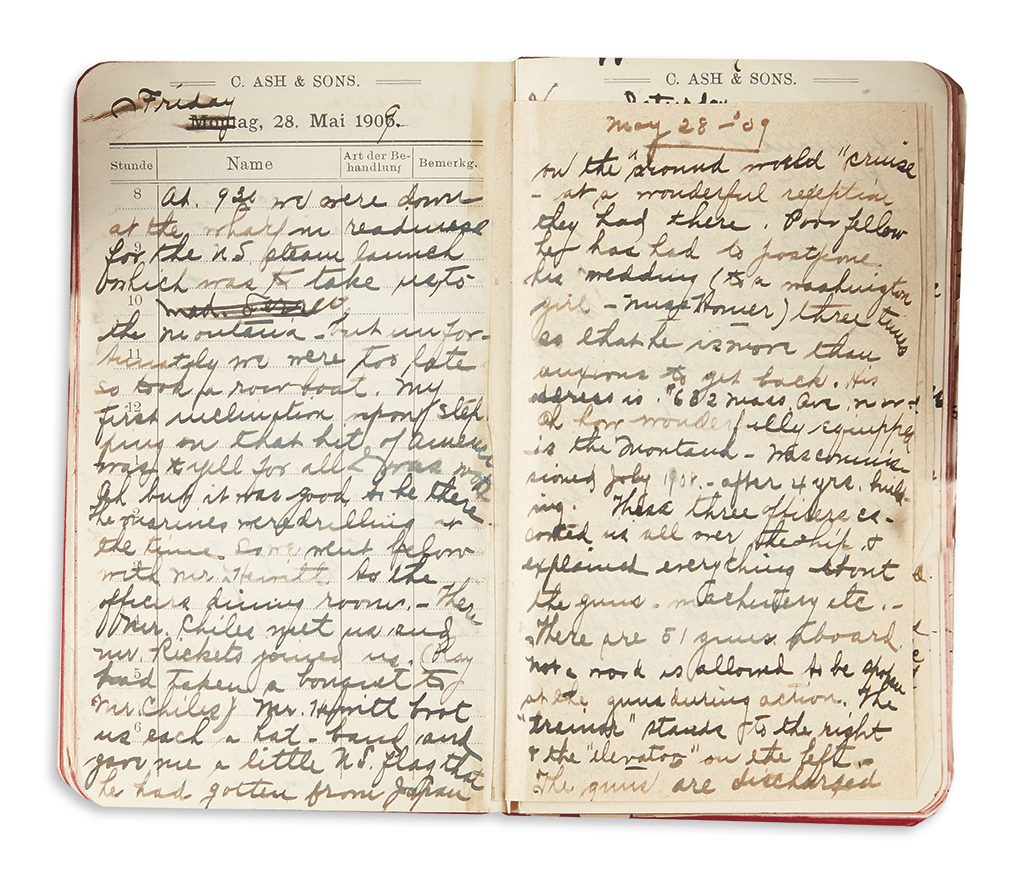
Lot 131: Mary Arbeely, diary of a young Syrian-American woman in Beirut, 239 manuscript pages, 17 November 1908 to 30 September 1909. Estimate $1,000 to $1,500.
Mary Arbeely was born in Los Angeles into what is generally regarded as the first family of Syrian immigrants in America. Her father, grandparents, and uncles, all Orthodox Christians and ethnic Arabs, had arrived in New York in 1878, fleeing oppression by the Turkish authorities. Her father Abraham Arbeely became a successful physician and founder of the first Arabic newspaper in America, Kawkab Amirka. In 1907, the family went on a trip to Beirut (at the time still part of the Ottoman Empire) that would last two years.
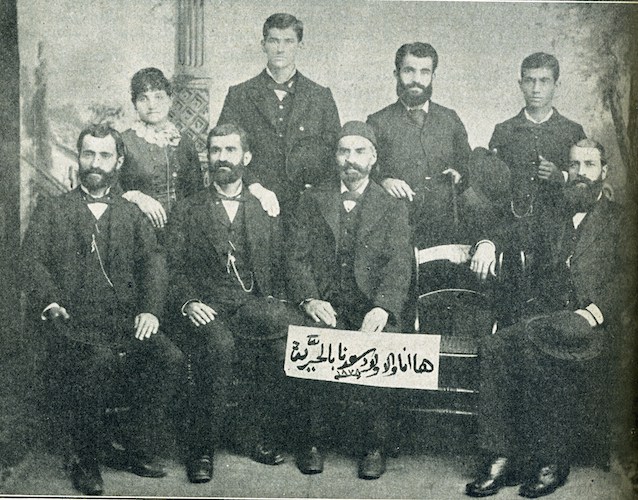
The Arbeely family in the nineteenth century. Courtesy of NC State University.
Mary recorded the trip in a repurposed 1906 German daily diary, often correcting the days of the week and the year when she thought of it; she began in November 1908 at the rear of the volume, and started over at the front in January 1909. The entries are filled with luxurious descriptions of Gilded Age adventures in Beirut, such as horseback riding, society teas, golf lessons, painting, singing and attending motion pictures. On many of these escapades she was accompanied by various gentlemen, many of whom tried unsuccessfully to woo her, despite her loyalty to her American beau Clifton Byrd “CB” Shoemaker, whom she would later marry. A typical entry reads: “Mr. Khouri then took the opportunity to ask me if my ‘heart was free.’ I told him no, that I left it back in America. . . . If I wanted to marry for money only, here’s my chance & I know I could have everything I want. But then I would rather marry for love and get a very poor man than this way. Give me CB every time.”
Another foiled attempt: “Received a letter from Mr. S. Haddad (a downright love sick proposal). He took it for granted I shall not refuse because he thinks he is somebody. He mentioned my having told someone in Cairo ‘no’ and showed my engagement ring but he did not take stock in that and still felt I was free. At the same time I told him I was not ‘free’ — crazy fool! They are all alike. No old man for me, thank you.”
But the trip wasn’t all gifts and adventures. The family was frightened by the Adana massacres taking place elsewhere in the Empire, in which up to 30,000 Armenian Christians were killed: “Everybody is still frightened that Beyrout may be the next to be visited by a massacre, for Adana, Tarsus, Mersine have been scenes of awful butchering. The troops under young Turkey have started from Salonica for Constantinople.” The next week, “the American consul advises everybody to remain at home today. . . . We have just learned that a Muslim was killed by a Christian in the mts. and that Mr. N. Khuri has gone in the auto to bring the body down by request of an uncle to the dead man. We all are afraid of our lives for this may cause a massacre between Christian & Muslims. . . . Everyone is scared to death today, expect something will happen tonight.”
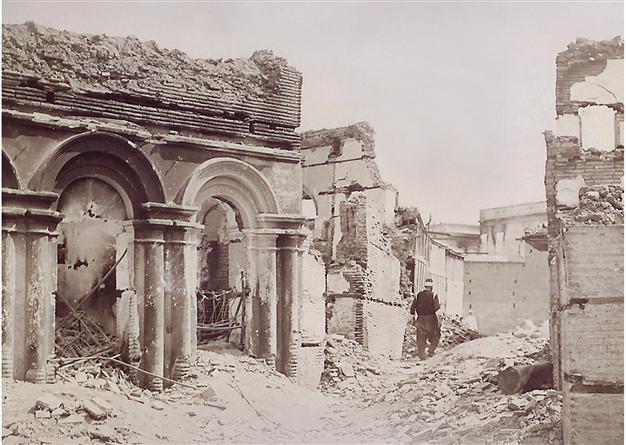
The Adana Massacre, 1909. Courtesy of The Hurriyet Daily News.
A contagious disease outbreak allowed her to express her patriotism: “Plague has broken out in this city, discovered on a woman who had come from India. . . . There have been 5 deaths. There is a quarantine in all ports against Beyrout. Will be fearful if we are to be in the midst of plague. Mr Arranean is leaving for the U.S.A. (wish I was in his boots). Wrote some songs for him. He is a dandy chap & a thoro American.”
Mary savored any trace of American culture: “The U.S. Steam launch was to take us to the Montana, but unfortunately we were too late so took a row boat. My first inclination upon stepping on that bit of America was to yell for all I was worth. Oh, but it was good to be there. . . . We reached the shore, having had a taste of Uncle Sam that we knew must last us until we get home.”
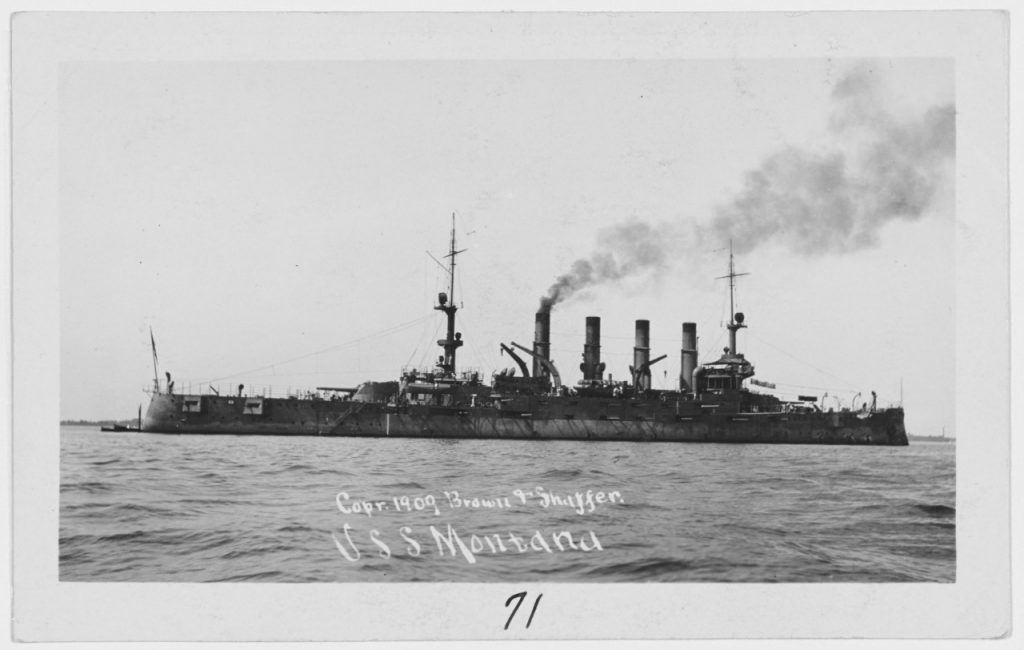
The USS Montana, 1909. Courtesy of the USS Montana Committee.
The family sailed back to America on August 9, 1909. On her arrival home, she wrote “I often feel as if I have been dead for two years & just come back to life.” Mary and her beau, Cliff Shoemaker, were married on October 17, 1914 in Washington, D.C. In the years that followed, Mr. Shoemaker would go on to secure two patents: the “eye-shade” and the rotary water sprinkler.
For more information, browse the full catalogue.

